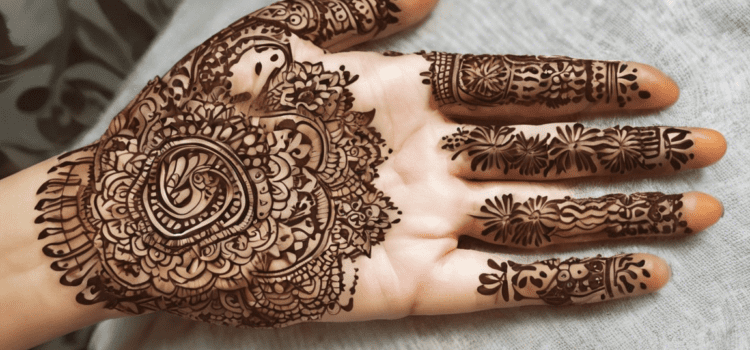Mehndi Design Inspiration
Introduction
Mehndi, also known as henna, is a form of body art that has been practiced for centuries in various cultures around the world. It is commonly used for special occasions such as weddings, festivals, and religious celebrations. Mehndi designs can range from simple patterns to intricate and detailed designs that cover the hands, feet, and other parts of the body. If you are looking for inspiration for your next mehndi design, you have come to the right place.
History of Mehndi
Mehndi has a rich cultural history that dates back thousands of years. It is believed to have originated in ancient Egypt and has been used in various cultures, including Indian, Pakistani, Arabic, and African, for ceremonial and decorative purposes. In many cultures, mehndi is considered a symbol of good luck, fertility, and love. The intricate designs are often passed down from generation to generation, making it a cherished tradition in many families.
Types of Mehndi Designs
There are several types of mehndi designs that you can choose from, depending on your preference and the occasion. Some popular types include:
-
Traditional Indian Mehndi: This style features intricate patterns that cover the palms, hands, and feet. It often includes peacock motifs, floral designs, and paisleys.
-
Arabic Mehndi: Arabic mehndi designs are known for their bold and geometric patterns. They typically do not cover the entire hand and feature more spacing between the designs.
-
Moroccan Mehndi: Moroccan mehndi designs are characterized by their intricate geometric shapes and patterns. They often include symbols such as the evil eye for protection.
-
Indo-Arabic Mehndi: This style combines elements of Indian and Arabic mehndi designs, featuring intricate patterns with bold outlines and shading.
Mehndi Design Inspiration
If you are looking for inspiration for your next mehndi design, here are some ideas to help you get started:
-
Bridal Mehndi Design: For brides-to-be, intricate and detailed mehndi designs that cover the hands and feet are a popular choice. These designs often include motifs that symbolize love, prosperity, and fertility.
-
Festival Mehndi Design: For festivals and celebrations, vibrant and colorful mehndi designs are a great choice. Consider incorporating floral patterns, peacocks, and other festive motifs into your design.
-
Minimalist Mehndi Design: If you prefer a more understated look, opt for a minimalist mehndi design with simple patterns and designs. This style is perfect for those who want a subtle yet elegant look.
-
Modern Mehndi Design: For a contemporary twist on traditional mehndi designs, consider incorporating elements such as abstract patterns, geometric shapes, or even incorporating your initials or significant dates into the design.
Tips for a Successful Mehndi Application
To ensure a successful mehndi application and a long-lasting design, consider the following tips:
-
Prepare Your Skin: Make sure your skin is clean and free of any oils or lotions before applying mehndi. This will help the henna paste adhere better to your skin.
-
Choose Quality Henna: Opt for natural henna paste that is made from pure henna leaves. Avoid black henna, as it can contain harmful chemicals that can cause skin reactions.
-
Allow Time to Dry: Allow the mehndi paste to dry completely on your skin before touching it or moving your hands. This will help the design set and last longer.
-
Seal the Design: Once the mehndi paste has dried, you can seal the design by dabbing a sugar and lemon mixture on top. This will help the mehndi darken and last longer.
-
Avoid Water: To prolong the life of your mehndi design, avoid exposing it to water for the first 24 hours after application. This will help the design deepen in color and last longer.
Frequently Asked Questions (FAQs)
-
How long does mehndi last on the skin?
Mehndi typically lasts on the skin for 1-3 weeks, depending on factors such as skin type, quality of henna, and aftercare. -
Can I shower with mehndi on my skin?
It is best to avoid exposing mehndi to water for the first 24 hours after application to ensure a deeper and longer-lasting color. -
Is mehndi safe for all skin types?
Natural henna is generally safe for most skin types, but it is advisable to do a patch test before applying it to a larger area. -
How can I make my mehndi design last longer?
To make your mehndi design last longer, avoid water exposure, seal the design with sugar and lemon, and moisturize your skin regularly. -
How can I remove mehndi stains from my skin?
Mehndi stains will naturally fade over time, but you can speed up the process by exfoliating the skin and using lemon juice or baking soda.
In conclusion, mehndi designs are a beautiful and meaningful form of body art that can add a touch of elegance and tradition to any occasion. Whether you are preparing for a wedding, festival, or simply want to adorn your skin with intricate patterns, there are endless possibilities for mehndi design inspiration. Remember to choose quality henna, follow proper aftercare techniques, and embrace the beauty of this ancient art form.

